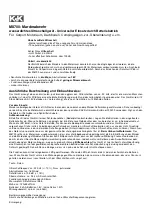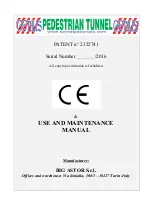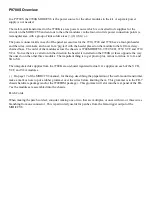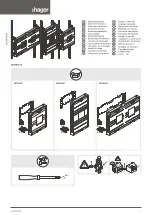
Description
11
The electrical control box is mounted on the frame below the sand tank and
incorporates a starter (7) for the pump and an RCD (8) to protect the operator against
electrical shock.
Sand Tank
The shallow sand tank (21) is fabricated from stainless steel for corrosion resistance
and should be filled with sand (not supplied by Armfield) or other granular material as
appropriate to the studies (refer to page 15 for details on choosing a suitable granular
material). An array of tapping points (37) in the sand tank floor is connected to a
multi-tube manometer (20) that enables the water table surface (phreatic surface) to
be determined. The level in each tube can be read by sliding the common scale
along the track at the top of the manometer. Before using the manometer to measure
water levels it is important to expel air from the flexible tubes connecting the
manometer tubes to the tapping points. (Refer to the
Commissioning
section). Each
tapping (37) in the sand tank floor incorporates a filter mesh to retain the sand while
allowing the water to flow. Two cylindrical wells (19) are also included in the sand
tank floor. The wells are covered with stainless steel mesh to prevent the loss of
sand. Valves and pipework beneath the sand tank allow the water draining from each
well to return to the sump tank. In-line feed flow control valves (32) allow the flow to
be varied. Flexible outlet hoses (33) allow the water to be diverted to a collecting
vessel (not supplied) for the purpose of measuring the volumetric flowrate. The two
wells are purposely designed to be short in length so that they can be left in position
without affecting the surface flow experiments. The plug of sand directly above each
well can be removed if required for abstraction experiments but the affect on the
results will be negligible if the sand is left in place.
The reference number/spacing of the tappings (37) and the position of the wells (19)
is shown below:
Location of tappings and wells in the sand tank
A perforated pipe (22), in the form of a French drain, is buried in the sand at each
end of the sand tank. These allow water to be drained from the sand tank or admitted
to the sand tank as required. Each French drain is connected through the side wall of
the sand tank to a flexible tube terminated with a self-sealing quick-release
Summary of Contents for S12-MKII
Page 1: ...Advanced Environmental Hydrology System Instruction Manual S12 MKII ISSUE 21 February 2014...
Page 4: ......
Page 8: ...4 Equipment Diagrams Figure 1 Front View of S12 MKII Hydrology System...
Page 9: ...Equipment Diagrams 5 Figure 2 Plan View of S12 MKII Hydrology System...
Page 10: ...Armfield Instruction Manual 6 Figure 3 End View of S12 MKII Hydrology System...
















































